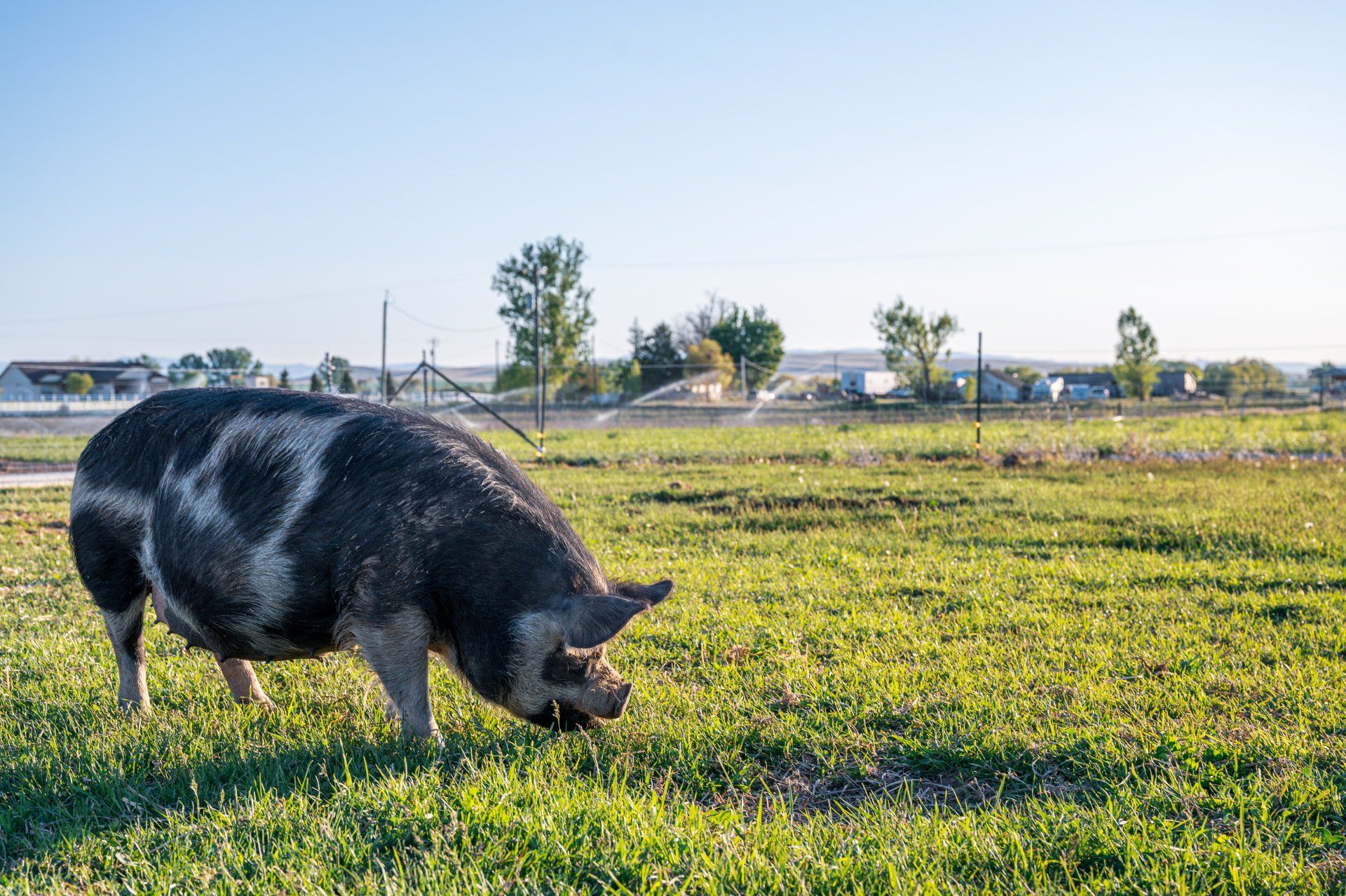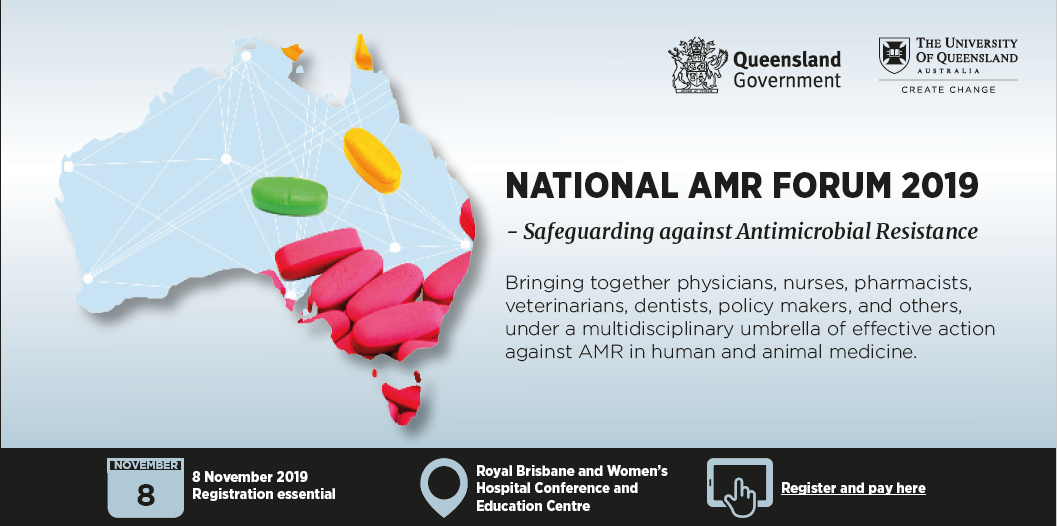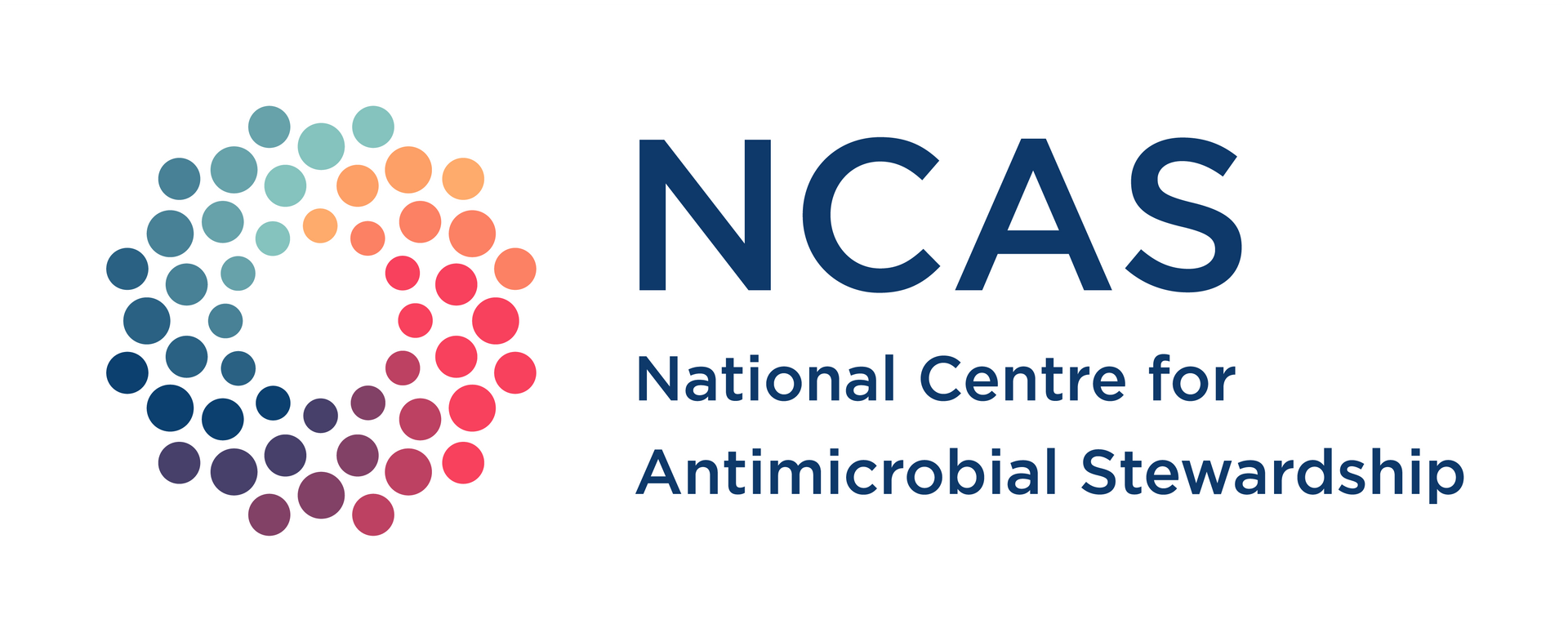Antimicrobial Stewardship in Animals
Antimicrobial stewardship
The primary goal of antimicrobial stewardship is to optimise clinical outcomes while minimising unintended consequences of antimicrobial use, including the emergence of resistance. Given the association between antimicrobial use and the selection of resistant pathogens, the frequency of inappropriate antimicrobial use is often used as a surrogate marker for the avoidable impact on antimicrobial resistance. The combination of effective antimicrobial stewardship with a comprehensive infection control program has been shown to limit the emergence and transmission of antimicrobial-resistant bacteria.
These guidelines are based on evidence from medical practice, as there are no peer reviewed assessments of interventions in veterinary practice at this time.
There are 7 main components to consider for a veterinary antimicrobial stewardship program:
- Education
- Utilisation of guidelines & judicious antimicrobial use
- Audit and feedback
- Delayed prescriptions
- Antimicrobial restriction
- Diagnostic testing
- Biosecurity
Veterinary education
In medical practice, there have been numerous studies that assessed either prescriber or patient education and assessed antimicrobial prescribing rates. Generally education interventions are multi-faceted and include discussion of the current guidelines, feedback, communications skills training and information about diagnostic testing.
You’ve found the guidelines, so that’s step 1!
We’ve created a series of short videos about antimicrobial stewardship.
Want more educational opportunities?
Speak to your local AVA representative about holding a talk in your region.
Client education
Pressure from clients to prescribe antibiotics is a problem in all sectors of veterinary practice; large and small practices, equine, bovine and companion animal practice. Clients see us as a valuable source of information, so it’s our job to educate them on appropriate use of antimicrobials and, importantly, when antimicrobials are not indicated. It can be difficult to do this, especially on Friday evening after 8 hours of consults! We’re creating some resources to help you out:
- Waiting room poster (coming soon)
- Client education flyer (coming soon)
Having a policy in place helps you defend your position; it’s not me, it’s the policy!
Utilisation of guidelines and judicious antimicrobial use
Antimicrobial guidelines have been shown to improve prescribing and reduce antimicrobial use in medical primary care practice. The guidelines on this website are, where possible, evidence based and are designed to be evolving and transparent. We encourage you to participate in the process by sending us any evidence that we may have missed and suggesting syndromes or diseases for guideline development.
The appropriate use of antimicrobials is critical in both effective care of our patients and in the reduction in antimicrobial resistance. Antimicrobial resistance will develop in the face of ANY antimicrobial use so when we use these drugs we need to use them correctly to reduce the likelihood of treatment failure. Use the MIND ME acronym to remember the following important factors:
M
Microbiology should guide therapy where possible
I
Indications should be evidence based and include a bacterial cause in most instances
N
Narrowest spectrum possible
D
Dosage appropriate to species, site and type of infection (label not always accurate)
M
Minimise duration of therapy
E
Ensure mono therapy wherever possible (one drug rather than combinations of drugs)
Audit and feedback
Individual feedback regarding antimicrobial prescribing has been associated with a significant decrease in prescribing compared to more general feedback or usual care. In the medical setting this feedback is usually delivered by an infectious disease specialist or an antimicrobial stewardship pharmacist. These positions clearly don’t exist in veterinary practice, but this doesn’t exclude audit and feedback from the veterinary setting.
Ideas for implementing audit and feedback in veterinary clinics:
- Senior veterinarians can audit recent graduate or new team member prescribing and provide feedback.
- Clinic rounds sessions are both educational and provide a forum for discussing appropriate antimicrobial use in your local area. Having regular “rounds” of typical and unusual cases allows for discussion of appropriate therapy and consistency among veterinary staff.
Delayed prescriptions
Delayed prescribing typically gives patients a 2-day delay on a prescription, so if symptoms persist or worsen antimicrobials can be obtained. There has been mixed results in medical practice but this could be easily implemented in veterinary practice whereby a note is made on a clinical record to allow antimicrobials to be dispensed 2 days later if deemed necessary by the client.
Antimicrobial restriction
Antimicrobials that are high-importance rating in human medicine should only be used after culture and susceptibility testing in veterinary medicine. This doesn’t mean you can’t use these drugs, just that if you think they are necessary you obtain a sample for culture and susceptibility testing prior to initiating therapy and adjust therapy accordingly once susceptibility results are available. This is referred to as de-escalation in the medical field and involves switching from drugs with a high-importance rating to those with a low or medium-importance rating if susceptibility testing indicates their effectiveness, or shifting from broad-spectrum to narrow spectrum therapy once a causative agent has been identified.
Restriction of antimicrobials at a clinic level would require:
Antimicrobials with high-importance rating (i.e., 3rd-generation cephalosporins [Convenia and ceftiofur] and fluoroquinolones [enrofloxacin]) be restricted and permission sought from a senior veterinarian or practice manager prior to use.
Alternative strategy: culture and susceptibility testing required prior to initiating therapy with these drugs and de-escalation based on susceptibility results
Diagnostic testing
Increased diagnostic testing allows for discernment between cases with a bacterial origin and those that do not. Cases that do not have a bacterial cause do not need antibiotic therapy. Culture and susceptibility testing is very useful but the time delay in obtaining results, and the cost, reduce the implementation of this test. Other cheap and fast tests are available such as cytology and patient side tests (Rainbow 6 for calf diarrhoea, etc.) that can refine a differential diagnoses list and give you confidence in not prescribing antimicrobials.
We’ll provide a review of cytology here soon!
Biosecurity
There are a wide variety of pathogens can be transferred from animals to humans, and vice versa. Interactions between animals and humans may occasionally result in infection in our patients but can also result in disease is us. Veterinarians carry antimicrobial resistant pathogens at a higher rate than the general public, both in Australia and around the world, but we also share those bacteria with our family and pets, putting people in close contact with us at risk. In addition, recent cases of illness and death among veterinarians and animal handlers have highlighted the grave danger of emerging and established zoonoses.
The AVA has produced guidelines to provide a practical understanding of zoonotic diseases, and empower veterinarians to significantly reduce the risk of zoonotic infection to themselves, their staff or clients. It is not practical or possible to eliminate all risks associated with zoonotic infections. However, reasonable measures can, and should, be taken to minimise risks of exposure to known, and unknown, pathogens.
The AVA guidelines
are practical and provide a good source of information for veterinary practices establishing biosecurity procedures for their clinic.
The cattle veterinarians special interest group has also developed a very useful resource for advising farmers on biosecurity – Biocheck. You have to be a member of the cattle veterinarians to get access. Equine Veterinarians Australia is also working in this area and resources may become available – we’ll keep you updated.

Karin A Thursky, Laura Y Hardefeldt, Arjun Rajkhowa, Courtney Ierano, Jaclyn Bishop, Lesley Hawes, Ruby Biezen, Sajal K Saha, Leslie Dowson, Kirsten E Bailey, Ri Scarborough, Stephen B Little, Fiona Gotterson, Brian Hur, Anna Khanina, Karen Urbancic, Helen K Crabb, Suzanna Richards, Anna Sri, Rodney James, David C M Kong, Caroline Marshall, Danielle Mazza, Trisha Peel, Rhonda L Stuart, Jo-Anne Manski-Nankervis, N Deborah Friedman, Noleen Bennett, Thomas Schulz, Helen Billman-Jacobe, Evette Buono, Leon Worth, Ann Bull, Michael Richards, Darshini Ayton, James R Gilkerson, Glenn F Browning, Kirsty L Buising, National Centre for Antimicrobial Stewardship Abstract Antimicrobial stewardship (AMS) in Australia is supported by a number of factors, including enabling national policies, sectoral clinical governance frameworks and surveillance programmes, clinician-led educational initiatives and health services research. A One Health research programme undertaken by the National Centre for Antimicrobial Stewardship (NCAS) in Australia has combined antimicrobial prescribing surveillance with qualitative research focused on developing antimicrobial use-related situational analyses and scoping AMS implementation options across healthcare settings, including metropolitan hospitals, regional and rural hospitals, aged care homes, general practice clinics and companion animal and agricultural veterinary practices. Qualitative research involving clinicians across these diverse settings in Australia has contributed to improved understanding of contextual factors that influence antimicrobial prescribing, and barriers and facilitators of AMS implementation. This body of research has been underpinned by a commitment to supplementing ‘big data’ on antimicrobial prescribing practices, where available, with knowledge of the sociocultural, technical, environmental and other factors that shape prescribing behaviours. NCAS provided a unique opportunity for exchange and cross-pollination across the human and animal health programme domains. It has facilitated synergistic approaches to AMS research and education, and implementation of resources and stewardship activities. The NCAS programme aimed to synergistically combine quantitative and qualitative approaches to AMS research. In this article, we describe the qualitative findings of the first 5 years. Read the full paper here . Citation : Thursky, K. A., Hardefeldt, L. Y., Rajkhowa, A., Ierano, C., Bishop, J., Hawes, L., Biezen, R., Saha, S. K., Dowson, L., Bailey, K. E., Scarborough, R., Little, S. B., Gotterson, F., Hur, B., Khanina, A., Urbancic, K., Crabb, H. K., Richards, S., Sri, A., James, R., Kong, D. C. M., Marshall, C., Mazza, D., Peel, T., Stuart, R. L., Manski-Nankervis, J.-A., Friedman, N. D., Bennett, N., Schulz, T., Billman-Jacobe, H., Buono, E., Worth, L., Bull, A., Richards, M., Ayton, D., Gilkerson, J. R., Browning, G. F., Buising, K. L., & National Centre for Antimicrobial, S. (2021). Antimicrobial stewardship in Australia: the role of qualitative research in programme development. JAC-Antimicrobial Resistance, 3(4), dlab166. DOI: https://doi.org/10.1093/jacamr/dlab166 .

Stephen Little, Andrew Woodward, Glenn Browning and Helen Billman-Jacobe Summary The piped water systems within buildings on pig farms provide pigs with continuous access to drinking water, and on many farms are also used for short periods to medicate growing pigs with antibiotics to help keep them healthy and productive. We surveyed managers of 25 medium to large pig farms across eastern and southern Australia to investigate critical elements of the design and management of water systems that impact water provision to pigs. We found wide variation in the configuration, length, and pipe materials and diameters of water systems in buildings across farms. In many buildings, main pipelines were larger in diameter than required. While this helps ensure that drinkers always provide plenty of water to pigs, it means water flows through pipes very slowly. We also found that in many buildings the number of pigs per drinker was above the recommended maximum, cleaning and disinfection of water systems was not done on many farms, and few managers were aware of the risks to water quality and pig health. We have identified important aspects of water provision to pigs for which recommendations could be added to industry guidelines used by pig farm managers. Abstract Drinking water distribution systems (WDSs) within buildings on pig farms have critical elements of their design and management that impact water provision to pigs, water quality, the efficacy of in-water antimicrobial dosing, and, thus, pig health and performance. We used a mixed-methods approach to survey managers of 25 medium to large single-site and multi-site pig farming enterprises across eastern and southern Australia. We found wide variation in the configuration (looped or branched) and total length of WDSs within buildings across farms and in pipe materials and diameters. Within many conventional buildings and some eco-shelters, WDSs were ‘over-sized’, comprising large-diameter main pipelines with high holding volumes, resulting in slow velocity water flows through sections of a WDS’s main pipeline. In over half of the weaner buildings and one-third of grower/finisher buildings, the number of pigs per drinker exceeded the recommended maximum. Few farms measured flow rates from drinkers quantitatively. WDS sanitization was not practiced on many farms, and few managers were aware of the risks to water quality and pig health. We identified important aspects of water provision to pigs for which valuable recommendations could be added to industry guidelines available to pig farm managers. Read the full paper here . Citation : Little, S., Woodward, A., Browning, G., & Billman-Jacobe, H. (2021). Water distribution systems in pig farm buildings: critical elements of design and management. Animals, 11(11). DOI: https://doi.org/10.3390/ani11113268 .

Ri Scarborough, Laura Hardefeldt, Glenn Browning and Kirsten Bailey Abstract Despite the important role of antimicrobial use in companion animals in the global challenge presented by antimicrobial resistance (AMR), very few studies have quantified pet owner factors that can contribute to suboptimal veterinary antimicrobial use. We conducted an online survey of pet owners, asking about their experiences with veterinarians, their opinions on antibiotic use and knowledge of antibiotics, and their communication preferences regarding judicious prescribing. Just over half (54%) of the 558 pet owners had received antibiotics for their pet at their last non-routine veterinary consultation and most owners were happy (83%) with the antibiotic prescribing decision of their veterinarian. A quarter (25%) indicated that they had been surprised, disappointed or frustrated when a veterinarian had not given their pet antibiotics; 15% had explicitly requested them. Owners placed a higher priority on their pet receiving the most effective treatment than on treatment being cheap or convenient. Most respondents recognized the limitations of antibiotic therapy and the risks associated with antibiotic use, but 50% believed the risks were confined to the treated animal; only a minority was aware of inter-species transfer of bacteria. Pet owners indicated that they would find judicious prescribing messages focused on the direct risks of antibiotics to their pet more compelling than those about public health. Our findings suggest that veterinary communications about responsible antibiotic use should focus on pet owners’ priorities and address or bypass their gaps in understanding regarding antibiotic resistance. Read the full paper here . Citation : Scarborough, R., Hardefeldt, L., Browning, G., & Bailey, K. (2021). Pet owners and antibiotics: knowledge, opinions, expectations, and communication preferences. Antibiotics, 10(11). DOI: https://doi.org/10.3390/antibiotics10111326 .

Laura Hardefeldt, Brian Hur, Karin Verspoor, Timothy Baldwin, Kirsten E Bailey, Ri Scarborough, Suzanna Richards, Helen Billman-Jacobe, Glenn Francis Browning and James Gilkerson Abstract Background: Cefovecin is a long-acting third-generation cephalosporin commonly used in veterinary medicine. Third-generation cephalosporins are critically important antimicrobials that should only be used after culture and susceptibility testing. The authors describe the common indications for cefovecin use in dogs and cats, and the frequency of culture and susceptibility testing. Materials and methods: A cross-sectional study was performed using clinical records extracted from VetCompass Australia. A previously described method was used to identify records containing cefovecin. The reason for cefovecin use was annotated in situ in each consultation text. Results: Over a six-month period (February and September 2018), 5180 (0.4 per cent) consultations involved cefovecin administration, of which 151 were excluded. Cats were administered cefovecin more frequently than dogs (1.9 per cent of cat consultations and 0.1 per cent of dog consultations). The most common reasons for cefovecin administration to cats were cat fight injuries and abscesses (28 per cent) and dermatitis (13 per cent). For dogs, the most common reasons for cefovecin administration were surgical prophylaxis (24 per cent) and dermatitis (19 per cent). Culture and susceptibility testing were reported in 16 cases (0.3 per cent). Conclusion: Cefovecin is used in many scenarios in dogs and cats where antimicrobials may be either not indicated or where an antimicrobial of lower importance to human health is recommended. Read more here . Citation: Hardefeldt, L., Hur, B., Verspoor, K., Baldwin, T., Bailey, K. E., Scarborough, R., ... & Gilkerson, J. (2020). Use of cefovecin in dogs and cats attending first-opinion veterinary practices in Australia. Veterinary Record. DOI: http://dx.doi.org/10.1136/vr.105997 .

Brian Hur, Timothy Baldwin, Karin Verspoor, Laura Hardefeldt and James Gilkerson Abstract Identifying the reasons for antibiotic administration in veterinary records is a critical component of understanding antimicrobial usage patterns. This informs antimicrobial stewardship programs designed to fight antimicrobial resistance, a major health crisis affecting both humans and animals in which veterinarians have an important role to play. We propose a document classification approach to determine the reason for administration of a given drug, with particular focus on domain adaptation from one drug to another, and instance selection to minimise annotation effort. Read the full paper here . Citation : Hur, B., Baldwin, T., Verspoor, K., Hardefeldt, L., & Gilkerson, J. (2020). Domain adaptation and instance selection for disease syndrome classification over veterinary clinical notes. Paper presented at the Proceedings of the 19th SIGBioMed Workshop on Biomedical Language Processing. DOI: https://www.aclweb.org/anthology/2020.bionlp-1.17.pdf .

Brian A. Hur, Laura Y. Hardefeldt, Karin M. Verspoor, Timothy Baldwin and James R. Gilkerson Abstract Antimicrobial resistance is a global crisis that veterinarians contribute to through their use of antimicrobials in animals. Antimicrobial stewardship has been shown to be an effective means to reduce antimicrobial resistance in hospital environments. Effective monitoring of antimicrobial usage patterns is an essential part of antimicrobial stewardship and is critical in reducing the development of antimicrobial resistance. The aim of this study is to describe how frequently antimicrobials were used in veterinary consultations and identify the most frequently used antimicrobials. Using VetCompass Australia, Natural Language Processing techniques, and the Australian Strategic Technical Advisory Group’s (ASTAG) Rating system to classify the importance of antimicrobials, descriptive analysis was performed on the antimicrobials prescribed in consultations from 137 companion animal veterinary clinics in Australia between 2013 and 2017 (inclusive). Of the 4,400,519 consultations downloaded there were 595,089 consultations where antimicrobials were prescribed to dogs or cats. Antimicrobials were dispensed in 145 of every 1000 canine consultations; and 38 per 1000 consultations involved high importance rated antimicrobials. Similarly with cats, 108 per 1000 consultations had antimicrobials dispensed, and in 47 per 1000 consultations an antimicrobial of high importance rating was administered. The most common antimicrobials given to cats and dogs were cefovecin and amoxycillin clavulanate, respectively. The most common topical antimicrobial and high-rated topical antimicrobial given to dogs and cats was polymyxin B. This study provides a descriptive analysis of the antimicrobial usage patterns in Australia using methods that can be automated to inform antimicrobial use surveillance programs and promote antimicrobial stewardship. Read the full paper here . Citation : Hur, B. A., Hardefeldt, L. Y., Verspoor, K. M., Baldwin, T. & Gilkerson, J. R. (2020). Describing the antimicrobial usage patterns of companion animal veterinary practices; free text analysis of more than 4.4 million consultation records. PLOS ONE, 15, e0230049. DOI: https://doi.org/10.1371/journal.pone.0230049 .

Arjun Rajkhowa, Kirsten Bailey, Laura Hardefeldt, Helen Billman-Jacobe, James Gilkerson and Glenn Browning (Published in Medical Journal of Australia-Insight ) The rise of drug-resistant infections presents significant challenges globally. Antimicrobial resistance (AMR) threatens to jeopardise health care delivery through increased mortality and morbidity, length of stay in hospitals, and costs of hospitalisation. Effective treatment for infections fundamentally underpins all of health care. When this is irreparably undermined, health care outcomes will be detrimentally affected. AMR is one of the definitive One Health problems of our times, spanning both human and animal health . Globally, practices that contribute to AMR, such as the misuse or suboptimal use of antibiotics, undoubtedly occur in both human and animal sectors. However, agriculture is often portrayed in media reports as the prime culprit and the crux of the crisis. Several misconceptions about Australian veterinary and agricultural antimicrobial use abound. Perhaps, in our attempts to grapple with the ramifications of the emerging crisis and apportion blame for it, we may occasionally misrepresent antimicrobial use in veterinary medicine in Australia. Outdated practices long since discontinued in Australia and inappropriate antibiotic use practices from overseas are discussed as if they occur here. Are antimicrobials used for growth promotion in Australia? An episode of Ask the Doctor on the ABC dealt with the issue of emerging AMR in people, but made some errors while discussing antibiotic use in animals. Most importantly, the presenters and featured (human health) experts suggested that antibiotics are used in every chicken, pig or cow for nearly all their lives. All antibiotics that are important for human health that had previously been labelled for use for growth promotion have had those label claims removed in recent years in Australia. This means that these antibiotics can no longer be used for this purpose in food-producing animals in Australia. Moreover, the program also represented the use of the “antibiotic-free” label in food production as a sort of panacea for perceived current problems. While it is commendable that many farmers and producers have minimised their antibiotic use, it is still important that farm animals with bacterial infections are appropriately treated with antibiotics. Health and welfare outcomes for sick animals will suffer if antibiotics are not appropriately used when they are needed. We need to ensure that sick animals receive the treatment they need, while preserving the efficacy of antibiotics for future use. Antimicrobials registered for use in agricultural animals in Australia The threat posed by increasing rates of drug-resistant infections has made it necessary for us to ensure that critically important antimicrobials remain effective for humans into the future. This entails carefully regulating their use in animals. Antimicrobials approved for use in Australia are different to those overseas. In particular, colistin and fluoroquinolones are not approved for use in food-producing animals, and no fourth-generation cephalosporins have been registered or approved for use in food-producing animals in Australia. Use of third generation cephalosporins is restricted. Animal husbandry regulations in Australia are relatively quite advanced. Animal product residue monitoring is undertaken across production sectors, and antibiotics constitute one group of monitored drugs, alongside anthelmintics, hormones, corticosteroids, fungicides, herbicides and others. Antibiotic residue testing covers the major antibiotic classes. Withholding periods are intended to ensure that no residues remain in meat products when they are processed for human consumption. The national residue monitoring program reports high levels of compliance with the regulatory regime across sectors. The poultry sector, for example, is generally understood to have responsible use practices, and antibiotics are only sparingly prescribed to treat or prevent infections when other strategies have failed. Withholding periods are observed. No hormones or steroids are used in poultry. While antibiotic residues are routinely monitored, bacterial contamination or bacterial resistance have only been assessed in small pilot and snapshot studies . Antimicrobial stewardship Antimicrobial stewardship (AMS) is a key element of the fight against the rise of “superbugs”. AMS ensures that antibiotic use is appropriate to treat the particular infection in the patient, and that critically important antibiotics are reserved to treat the most serious infections in people. The National Centre for Antimicrobial Stewardship brings together medical and veterinary infectious disease experts in a One Health research program focused on preserving the effectiveness of antibiotics for the future. Our research on antimicrobial use in animals in Australia has examined several key aspects of antimicrobial prescribing in veterinary medicine. The centre has undertaken studies to examine and appraise: antimicrobial prescribing by companion animal , bovine and equine veterinarians; antimicrobial prescribing guidelines for dogs, cats and horses in Australia; antimicrobial dosing for common equine drugs; antimicrobial susceptibility testing by veterinary diagnostic laboratories; antimicrobial drug labelling and its implications for AMS; barriers to and enablers of antimicrobial stewardship in veterinary practices; and veterinary students’ and trainees’ knowledge and perceptions about AMS and biosecurity. We are undertaking research on using information technology tools to extract antimicrobial usage data from medical records; using antimicrobial susceptibility information to assess the validity of guideline recommendations; developing infection control and AMS capacity among dairy farmers; and, most importantly, implementing an AMS trial across a nationwide network of clinics, where we provide resources to support different levels of AMS activities in different clinics to determine the acceptability and efficacy of targeted strategies. We have developed clinical resources for veterinary AMS, including educational posters and antimicrobial prescribing guidelines for companion animal, equine and bovine practices, and these have been disseminated locally and nationally, with the support of Agriculture Victoria (which sponsored the development of these resources). Agriculture Victoria has supported efforts to disseminate these resources widely among veterinarians and farmers in Victoria. We have found engaging with veterinarians and farmers about AMS to be an overwhelmingly positive experience – there is a tremendous desire for more information and great support for the promotion of judicious antimicrobial use. Our prescribing guidelines have also been assessed in a wide-ranging guideline-appraisal project, and we aim to use this to inform how we refine and use the guidelines. A One Health approach to the problem The Australian Government, through its National AMR Strategy (which, encouragingly, will be renewed later this year), has attempted to cohesively bring human and animal health sectors together to work collaboratively on tackling the problem of AMR. This necessary effort has yielded considerable success, in that we now have a clinical, scientific and policy environment where cross-pollination and collaboration can occur. This can be further consolidated in the future. However, at the moment, it is clear that we lack effective communication between different sectors, and there is still insufficient understanding, on either side, of the problems and challenges that affect the other. Conversely, we are also less aware about the myriad structural and environmental factors that may be seen as enablers of progress in this area in Australia. Undoubtedly, the global ramifications of the problem of inappropriate antimicrobial use in agriculture are vastly more complex. As such, direct and unqualified comparisons between different geographical and political contexts may not be tenable. Nevertheless, we can and must engage in nationally (and, ultimately, globally) coordinated efforts to improve veterinary education and training , and support initiatives focused on improving antimicrobial use in different countries. Our team, alongside others in Australia and New Zealand, has engaged in such work in the Asia–Pacific region. We recognise the importance of facilitating greater knowledge about optimal antimicrobial use in agriculture globally, and acknowledge that significant barriers to stewardship remain in many places. That said, insofar as veterinary medicine in Australia is concerned, we should attempt to avoid convenient mischaracterisations, encourage timely reporting of actual antimicrobial usage in agricultural industries, and aim to more accurately identify the challenges that continue to act as barriers to AMS here.

This veterinary workshop was delivered by NCAS (Faculty of Veterinary and Agricultural Sciences, University of Melbourne) and the School of Veterinary Science (University of Queensland) at the National AMR Forum 2019. It covered: Antimicrobial use and stewardship in veterinary settings How antimicrobial prescribing guidelines are developed, reviewed and maintained How to use the prescribing guidelines Dates : 7 November 2019 Venue : Royal Brisbane and Women's Hospital Conference and Education Centre, Brisbane See here .

L. Y. Hardefeldt Abstract Underdosing of equine antimicrobials is a global issue and may be contributing to antimicrobial resistance in horses. Recent research in Australia has identified that most antimicrobial use in peer‐reviewed literature is at a higher dose than that currently on the label for many common equine antimicrobials in the United States, the UK and Australia. These dosing regimens used are now considered the most appropriate doses to be using in horses and veterinarians treating equine patients should be aware of the contemporary dosing regimens. Read the full paper here . Citation : Hardefeldt, L. (2019). Dosing equine antimicrobials: Ensuring clinical success and avoiding antimicrobial resistance. Equine Veterinary Education. DOI: https://doi.org/10.1111/eve.13190 .

At this seminar, Prof. Brian Oldenburg from the School of Population and Global Health at the University of Melbourne discussed implementation science methods and principles. Prof. Oldenburg's research group has prepared a WHO workbook on implementation research - A guide to implementation research on the prevention and control of non-communicable diseases . Researchers from the National Centre for Antimicrobial Stewardship at the University of Melbourne and Monash University discussed the challenges of implementing antimicrobial stewardship across human and animal health settings. Prof. Brian Oldenburg (BSc, MPsychol, PhD) is the chair of the Non-Communicable Disease Unit in the Melbourne School of Population and Global Health, University of Melbourne; director of the WHO Collaborating Centre for Implementation Research and Prevention and Control of NCDs; and director of the Centre of Research Excellence in Interactive Digital Technology to Transform Australia’s Chronic Disease Outcomes. Date : 24 September 2019 Venue : GM002, Doherty Institute, 792 Elizabeth Street, Melbourne See here .

